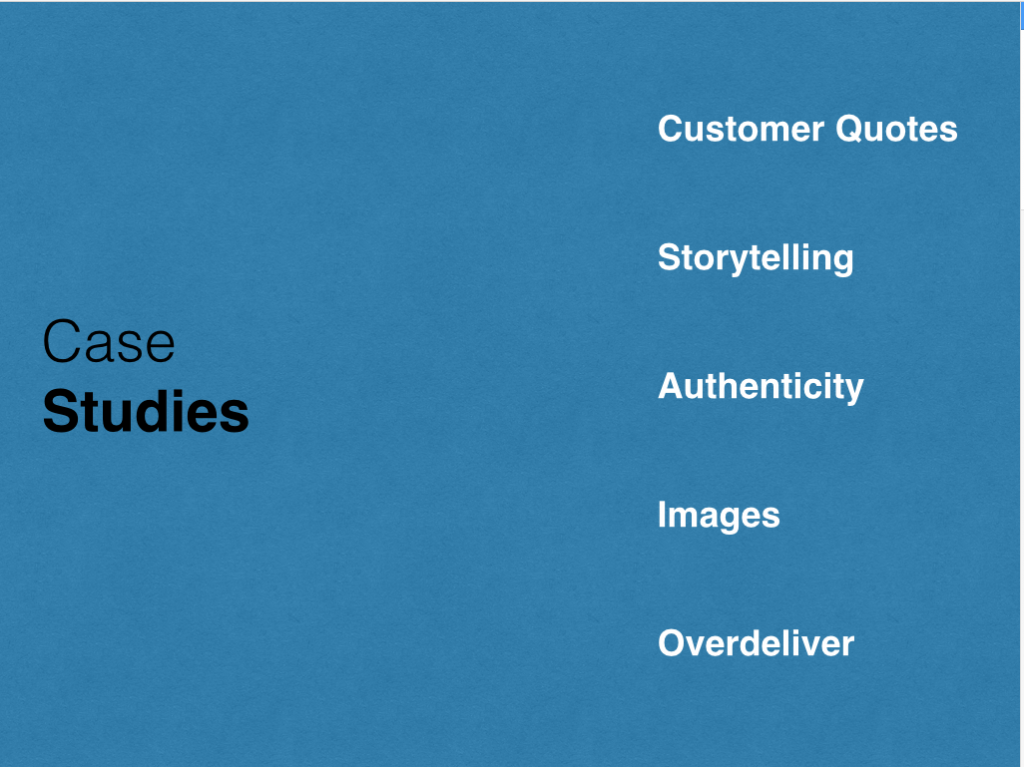You’ve heard about the high conversion rates of good case studies, and you’ve decided to write your first one.
Great! It’s going to be a nice feather in your entrepreneurial cap. People will flock to your website to learn more. You’ll have more customers than ever because of the work you’ve done with others.
Except, just how do you write compelling case studies?
It’s not difficult. Just like all aspects of writing, case studies follow a standard formula.
One that’s been designed and honed for marketing purposes.
However, one of the tripping points with case studies is they can be a bit dry and boring. But, they don’t need to be.
If you want to write case studies that rock, one that converts leads into customers, apply the following five tips for creating compelling presentations.
Case Studies: The Formula
All case studies are built around the premise of problem-solving. Your customers have a problem, and your case study provides the evidence that your solution works. That evidence is client satisfaction, and the data to back up your claims.
For instance:
The introduction should clearly outline the problem you’re solving.
The body should provide:
- Background information, your clients’ stories, and the challenges they faced.
- Analysis of the problem or situation, as well as any other solutions or competitors’ products your customers tried out unsuccessfully.
- Your alternate approach and ultimate solutions for an ideal outcome, AKA customer benefits.
- Successful results your clients found by using your solution.
- Steps or your plan of implementation.
The conclusion wraps it all up with a strong call-to-action.
References and Citations
Once you’ve gathered all of the pertinent information to design your case studies, you need to pull it all together in an imaginative manner to connect with your readers. And that’s where these next tips come into play…
- Add a customer quote(s). Nothing adds credibility like a satisfied customer. Their words are a powerful factor in confirming that you and your products, “walk the talk.” An enthusiastic thumbs up from a client corroborates your claims and adds believability and interest. Keep a praise file of favorable comments from clients to draw from—with their permission, of course.
- Tell an interesting story. It’s a bit of a fine line. Good case studies need to be factual, but data and statistics can be dull and fail to keep your reader’s attention. Instead, choose to present your information in story form while blending in the relevant data. Some of your clients’ stories will be more interesting, with a greater WOW factor than others, so select one that’s going to relate to your ideal customer. Craft it in a manner that will evoke curiosity and interest for your readers to keep them reading through until the end.
- Authenticity beats hype. In a world where we’re already over-saturated with marketing messages, your case studies have to be remarkable to stand out. False claims and misleading messages won’t create sustainable results. Highlight the verifiable outcomes your customers are getting by showcasing the beneficial results real people are receiving from your services.
- Use graphics and images. Add some visual interest for your readers. Break up the monotony of text with bullets, highlights, videos, slideshows, and graphics. Todays’ infographics come in a wide variety of formats and can be used to tell the case study itself, as this slideshare presentation shows, or to enhance the formatting of your text. This Pinterest page on case study infographics has great examples to inspire some creative use of visuals for crafting reports.
- Overdeliver. By its nature, case studies are designed to generate leads and sales. But don’t jump in too soon with a sales pitch. Focus on staying with the customer’s cares and concerns, removing resistance by outlining the benefits and positive results. Provide great information with links to additional resources, as well as references to extend your credibility.
Case studies can be fun to compose and interesting to read—and that’s an excellent combination for successfully generating leads.
